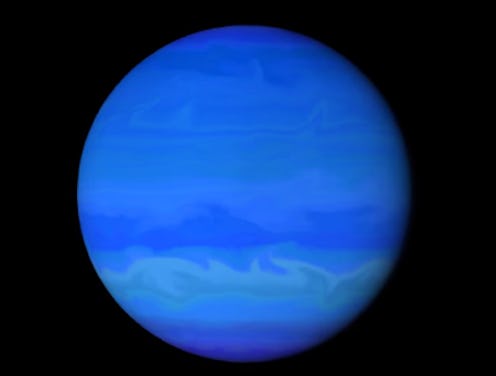News
Scientists Found Evidence Of A Ninth Planet

Pluto is turning on its axis this morning with the news that scientists may have discovered evidence of a ninth planet. The mysterious Planet X, whose existence has been debated for centuries, may finally have its place in our solar system recognized. Astronomers at the California Institute of Technology (CalTech) Konstantin Batygin and Mike Brown published their findings today in The Astronomical Journal.
Though they have yet to obtain visual confirmation of the body, they provide key evidence of its existence. Just as the French mathematician Urbain Le Verrier anticipated the discovery of Neptune in 1846 by studying the irregularities in Uranus' orbit, Planet X is similarly inferred. Due to detailed analysis of the unusual elliptical orbit of a cluster of six icy objects just beyond Neptune, the planetary scientists believe a large body is playing with their trajectory (which is tilted out of the solar system plane). Batygin and Brown state that there is a very slim chance that the placement of these objects could be a coincidence — about one in 15,000, or .007 percent. They deem that no star could create such a strange orbit; only the pull of a hidden giant could explain the six's unusual elliptical movement. Brown asserted his claims when speaking to Nature: "If you look at the evidence and statistics, it’s very hard to come away with any other conclusion."
Planet X is thought to be similar in size to Neptune, with a mass ten times the size of Earth's and a heavy atmosphere of helium and hydrogen. They hypothesize that around 4.5 billion years ago, the planet was shoved out of the region around the sun where planets were being forged, and migrated to its current faraway orbit. It was slowed by a disk of gas, and settled farther beyond the frost line with the other giants, like Jupiter, Uranus, and Neptune. It is thought to make its rotation around the sun every 15,000 years (a vast amount of time compared to its neighbor Neptune, which orbits the sun every 164.79 years).
If this is true, our conception of the solar system will be forever changed, not only by the planet's existence but also by its placement. The closest Planet X comes to the sun is 200 astronomical units (an AU is 150 million kilometers, which is the distance from the Earth to the Sun), but according to calculations, it wanders as far as 600 to 1200 AU. It is surprising that it would travel beyond the Kuiper Belt, which is the region beyond Neptune (30 AU), thought to be basically a debris field containing comets and many small icy bodies (including sad, forgotten Pluto) at the outer edge of our solar system. The Kuiper Belt was thought to exist in its jumbled current state because there wasn't another planet beyond Neptune. Though, with the hunt for the ninth planet reinvigorated, more objects with orbits influenced by Planet X are expected to appear.
Theories of a ninth planet have been around for many years. In 1906, wealthy businessman Percival Lowell founded the Lowell Observatory in Flagstaff, Arizona and began his search for what he deemed "Planet X." He devoted the last decade of his life to the theory that there was a planet beyond Neptune, which eventually lead to the discovery of Pluto in 1930. But Pluto was not an adequate answer to the Planet X search— and Brown made sure of that in 2005.
In his book How I Killed Pluto, Brown details his discovery of Eris, an icy body nearly equal to Pluto's size. The proof that other large worlds existed beyond Neptune in the Kuiper Belt lead to Pluto's downgrade to the status of "dwarf planet." Ironically, in 2003 Brown lead the team that discovered Sedna — another icy body smaller than Pluto with a strange orbit beyond the Kuiper Belt (it was the farthest known object in the solar system at the time). And this began his own personal search for a planet or large body that influenced Sedna's crazy orbit.
Brown understands why many might be skeptical of this discovery, and why some would think it crazy to support the dream of Planet X. But he stands by his hypothesis when talking to Science Magazine. "Why is this different? This is different because this time we’re right."
Though the research is supported by advanced computer models and peer-reviewed analysis, Brown understands that his theory of Planet X will remain just that until the planet is caught on telescope. Brown adds, "Until there’s a direct detection, it’s a hypothesis — even a potentially very good hypothesis." Researchers are combing the skies at Subaru, one of the largest telescopes, in Hawaii. And when The Large Synoptic Survey Telescope in Chile begins operating, they will have an even greater chance of spotting it. Batygin and Brown have hopes of finding Planet X within the next five years.
I should also add that I've already started writing my sci-fi screenplays "The Ninth Planet" and "Journey To Planet X." So hands off.
Images: ScienceMagazine/YouTube, pixabay